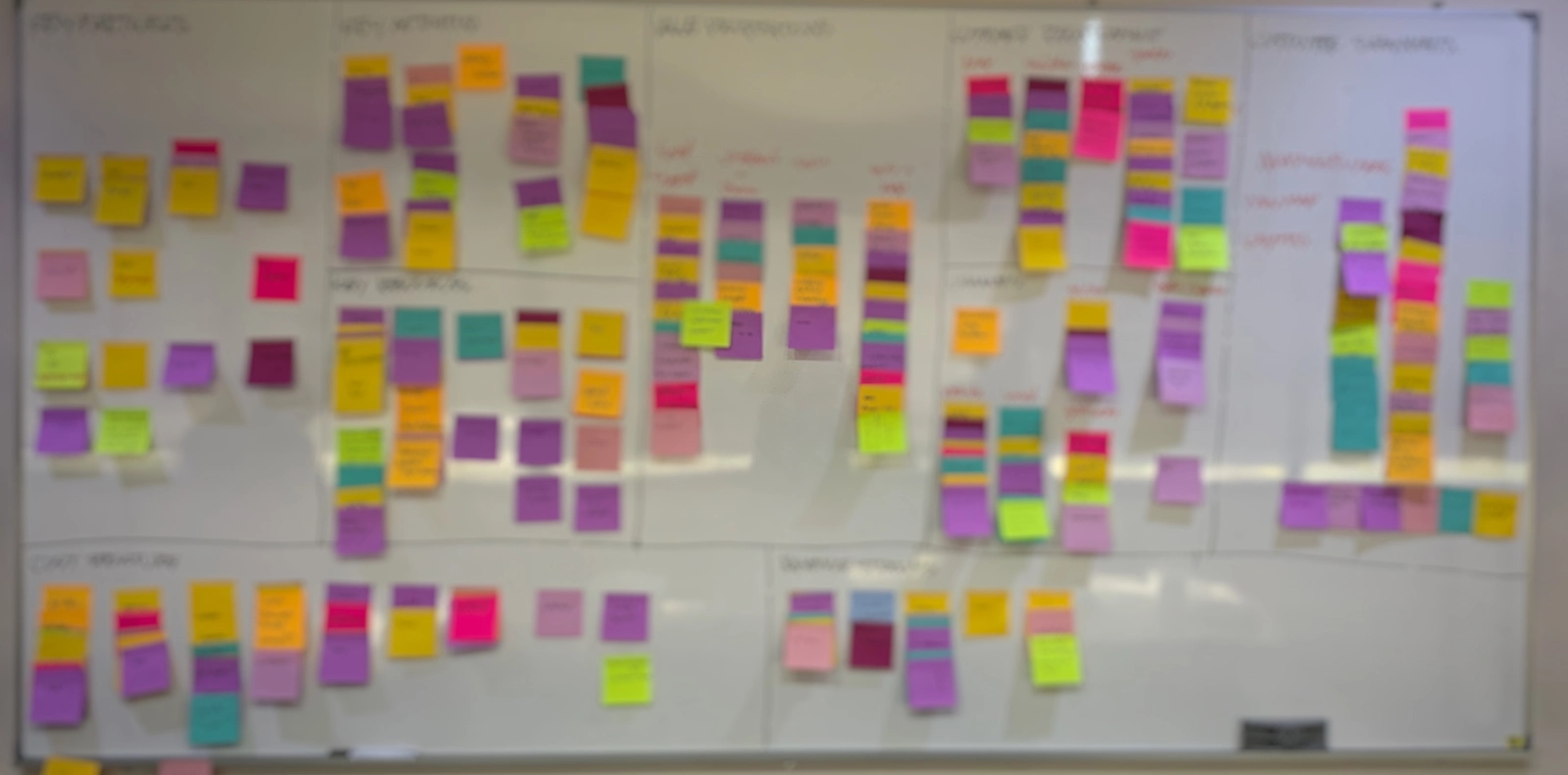In entrepreneurship, we're faced with the daily balancing act between innovation and uncertainty. We forge ahead into dark caverns of the unknown in search of a light we're sure exists.
To help guide the way, laying a solid foundation for your business is not just advisable – it's imperative.
One powerful tool that has emerged as a trusted lantern for startups and established enterprises alike is the Business Model Canvas (BMC). This dynamic framework, developed by Alexander Osterwalder and Yves Pigneur, offers a structured approach to understanding, visualizing, and iterating on your business model. In this blog post, we delve into the intricacies of the Business Model Canvas and explore why identifying a product-market fit before building is the linchpin for success.
What is the Business Model Canvas (BMC)
The Business Model Canvas is a concise visual representation, condensed into a single page, encapsulating the critical facets of a business and its operations.
Comprising nine building blocks, the canvas provides an overview of how a company generates, delivers, and captures value. These blocks include key aspects such as customer segments, value propositions, channels, customer relationships, revenue streams, key resources, key activities, key partnerships, and cost structure.
The video below provides a brief overview of the construction and benefits of developing a BMC.
Customer Segments and Value Propositions
At the core of the canvas lies the synergy between customer segments and value propositions.
In identifying target audiences, and understanding their pain points, desires, and preferences, businesses can craft value propositions that directly address these needs. This alignment is the bedrock of a successful venture.
The Role of Product-Market Fit
Before delving into the complexities of the Business Model Canvas, it's crucial to acknowledge the significance of product-market fit (PMF). PMF refers to the sweet spot where a company's product satisfies a significant market demand. This delicate equilibrium is where the magic happens – customer needs align seamlessly with the value a product provides.
Iteration and Adaptation
Identifying a product-market fit before building out the full business model allows for a more iterative and adaptable approach. Startups, in particular, operate in a landscape of uncertainty. By focusing on validating the product's appeal to the market first, entrepreneurs can save precious resources that might have been invested in building a complete business model around an unproven concept.
Mitigating Risks
Building a business model without a clear understanding of the product-market fit is akin to constructing a house without a solid foundation. It's a risky venture that may lead to wasted time, money, and effort. By validating the product-market fit early on, businesses mitigate these risks and increase the likelihood of sustainable success.
Customer-Centric Approach
A customer-centric approach is the linchpin of both product-market fit and the Business Model Canvas. By prioritizing the needs and preferences of the target audience, businesses ensure that their value propositions resonate authentically. This customer-focused strategy not only attracts initial customers but fosters long-term relationships, driving sustained growth.
Bridging BMC and PMF
The synergy between the Business Model Canvas and product-market fit is evident in their shared emphasis on understanding customers and delivering value. The canvas serves as a framework for articulating and refining a business model, while product-market fit ensures that the model is built on a solid foundation of validated customer demand.
Designing and working through the development of a Business Model Canvas is a powerful exercise for entrepreneurs. However, its effectiveness is maximized when coupled with a robust understanding of product-market fit. Identifying and validating the product-market fit before building out the full business model is a strategic approach that minimizes risks, encourages iteration, and fosters a customer-centric mindset.


